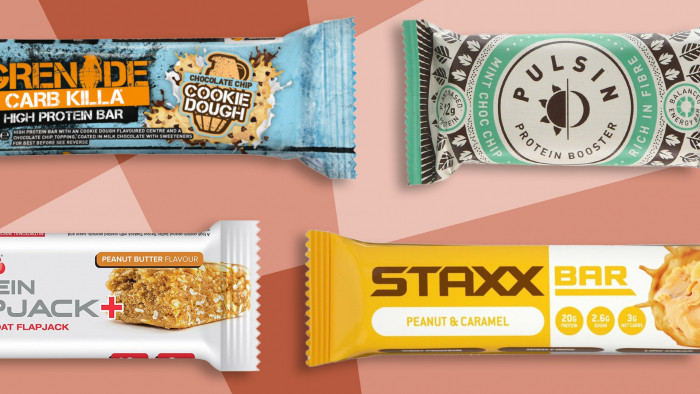Waking up at 6am on a Saturday morning to embark on a run never feels good. Waking up at 6am on a Saturday morning to run a 12 mile race involving crawls under barbed wire and swims through ice infested waters is just downright depressing.
As the ShortList team stood at Waterloo station awaiting our train to Winchester, the range of emotion exhibited was somewhat varied. We were tired, we were apprehensive, we were worried we'd brought the wrong kit - yet excitement persisted. The sun was setting temperatures climbing and the train was on time. Things were looking good so far.
As we parked up at the Tough Mudder car park and made our way over a hill towards the event village, the scene turned from serene Hampshire hillsides to something differently entirely. Hoards of mud drenched athletes were running in various directions, some clambering across obstacles, others dashing past and screaming warnings to the latest arrivals, all to a cacophonous back drop of motivational nonsense from concert-worthy speaker systems. It felt like we'd waked onto the set of an elaborate military film.
We dropped off our bags, picked up our race numbers, took one longing look at the Strongbow bar, and jogged of to the starting pen. That's right, a pen. The starting area wasn't just a cordoned off area with some weak plastic fencing, it was an enclosure into which access had to be gained via a 6 foot wall. The gulps from the team were audible.
The first obstacle arrived after a short run; a barbed wire crawl space called the “Kiss of Mud”. This one was pretty easy, as long as you stayed low. Next, “The Glory Blades”: a series of 8 foot walls where we were first introduced to the importance of team work.
It wasn't until the end of the first mile and half that the obstacles became challenging. The third was called the “Walk the Plank” – involving a climbing to the top of a fifteen foot platform before leaping into a muddy, temperature lowering pool. Safe passage beyond the pool also heralded the first team bonding high-fives.
At mile four, the first signs of fear appeared as we approached the “Arctic Enema”: a large container full of ice-cold water (along with a lot of actual ice). Not only were we required to plunge into its depths, we also had to negotiate an obstacle, forcing us under the icy waters. As we stood watching other racers take squealing to the water, the desire to slip round the side was quite high. Then we saw the line of cameras capturing the heroic survives on the other side, and realised that there was no option. We leapt in.
Hitting the water was like impacting on a wall, the breath forced from our lungs as the cold set in. With a deep breath we plunged our head under the barricade and clambered out. That was only the seventh obstacle.
The next fourteen varied in difficulty. We crawled through holes, we pushed each other over walls and we lost count of our tumbles in mud. The real test however, the real obstacle that no training could prepare us for, were the electric shocks. Could Tough Mudder really send 10,000 volts into our bodies or was it an elaborate bit of marketing to make the event look harder? We hoped it was the latter. As we approached the “Electric Eel”, a 10 metre long mud pool with wires hanging down to the ground, we weren't so sure.
With the cries of pain from the people clambering through echoing in our ears, and the disconcerting crack of the wires actually sparking with current, a terror took hold of us as we slowly made our passage under the obstacle. Halfway through we had our first taste of the shock, as a wire caught in the t-shirt of one of the team. A feeling not dissimilar to the most brutal punches resulted in repeated spasms. There was a mad sprint to get to the end. It wasn’t all marketing hype – the electric shocks were extremely real.
After mounting the enormous half pipe (appropriately titled “Everest”) we reached the finish line. Unfortunately, separating us from victory (and the Strongbow bar) was a veritable forest of electric wires, crackling in the breeze. Fancying ourselves as melodramatic heroes, we assembled in a pack and ran at our fate. There were screams, quickly replaced by cheers as we neared the end. That was until we realised that one of us had fallen face first into the mud.
We picked up our finisher's pint of Strongbow, donned our headbands and t-shirts and wandered over to the bar area to drink, still covered in mud.
Tough Mudder is so much a race, as a challenge. In isolation, the 11 mile distance covered during the event isn't too difficult, and a lack of official timing sees concerns over speed disappear into the mud. The real difficulty of the event is overcoming the obstacles: out of the 21 we had to negotiate, each of us had our own fears.
Whether it’s the electric shocks, the ice-water, carrying a log or simply just the running itself, few people finish Tough Mudder without a sense of pride.
Just don't wear your best running shoes.
(Images: Ken Moreton)
Latest


Ten things you need to know about Hyrox


Is clubbing actually good for you? We asked an expert


Horticulturist shares tips on how to urban garden
Related Reviews and Shortlists


Best gifts for runners that they'll actually want and use


The best protein bars to fuel your workouts





